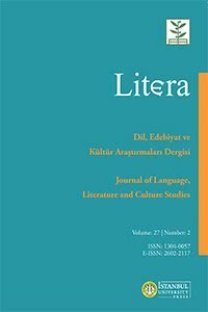THE ARMADA PORTRAIT: COSTUME AND THE BODY POLITIC
The Armada Portrait : Costume And The Body PoliticEsra MELiKOGLU Fashion and image-making were a pivotal strategy in transforming a 25-year-old woman, into the much revered Queen Elizabeth I, indeed, it encouraged the cult of Gloriana, the virgin queen, who, during her 45-year reign, defeated the Spanish Armada and thus saved Protestant England fromSpanish catholic domination as well as Jed her nation to prosperity, peace and primacy as a great colonial force.In the Armada Portrait , which was painted by an unknown painter, the body of Queen Elizabeth I, clad in ostentatious costumes, functioned as an emblem of the body of imperial England and its politics. Image-making intervened: the queen's heavily structured, padded, stiff and richly embroidered costumes were meant to counteract any impression of a soft female shape and thus female frailty.Moreover, one of the dominant principles in the pattern of her costumes is a striking centrality as emblematic of her central position as ruler, her centralised government, success in elevating England to a primary world power, its central position to its colonies and still on a larger level, of the centralisedPtolemaic cosmology.
THE ARMADA PORTRAIT: COSTUME AND THE BODY POLITIC
The Armada Portrait : Costume And The Body PoliticEsra MELiKOGLU Fashion and image-making were a pivotal strategy in transforming a 25-year-old woman, into the much revered Queen Elizabeth I, indeed, it encouraged the cult of Gloriana, the virgin queen, who, during her 45-year reign, defeated the Spanish Armada and thus saved Protestant England fromSpanish catholic domination as well as Jed her nation to prosperity, peace and primacy as a great colonial force.In the Armada Portrait , which was painted by an unknown painter, the body of Queen Elizabeth I, clad in ostentatious costumes, functioned as an emblem of the body of imperial England and its politics. Image-making intervened: the queen's heavily structured, padded, stiff and richly embroidered costumes were meant to counteract any impression of a soft female shape and thus female frailty.Moreover, one of the dominant principles in the pattern of her costumes is a striking centrality as emblematic of her central position as ruler, her centralised government, success in elevating England to a primary world power, its central position to its colonies and still on a larger level, of the centralisedPtolemaic cosmology.
___
Baker-Smith, Dominic. "The Cultural and Social Setting: Renaissance and Reformation". In 16rh Ce111ury Brirain: The Cambridge Cu/rural llis101J'· Cambridge: Cambridge UP. 1992.Cosgrave. Bronwyn. 171e Comp/ere l-lis101J' O.f Cos111111e & Fashion: From Ancienr Egypt To The Presenr Day. New York: Checkmark Books. 2000.
Elizabeth l."Speech to the Troops at Tilbury". In 111e Nor/on Anrhology Of Lireralllre By Women: The Tradirion in English. New York and London: W.W. Norton. 1985.
Gilbert. Sandra M. and Susan Gubar. "Queen Elizabeth I". In 171e Nor/on Anrhology O.f Lirerarure By Women: The Tradirion in English. New York and London: W.W. Norton, 1985.
Grieco, Sarah F. "The Body, Appearance. and Sexuality". Eds. Natalie Zemon Davis and Arlette Farge. In A 1-lisrory of Women in rhe Wes/: Renaissance and Enlighrenmenl Paradoxes . 2"d ed. Cambridge l a/.:Belknap P of Harvard UP, 1994. Vol. 3.
Guy. John. ''The Tudor Age (1485-1603)". In The Oxford HislOIY Of Brirain. Ed. Kenneth 0. Morgan. Oxford and New York: Oxford UP. 1988.
Howard. Maurice and Nigel Ll ewellyn. "Studies in the Individual Arts". In 16th Century Britain: 771e Cambridge Cultural Histo1y. Cambridge: Cambridge UP. 1992.
Tarrant. Naomi. 171e Developmem of Costume. London and New York: National Museums of Scotland. Edinburgh in conjunction with Routledge. 1996.
Zemon Davis, Natalie. "Women in Politics". In A Histo1:y of Women in the Wesr: Renaissance and Enlightenment Paradoxes. 2"d ed. 4 vols. Cambridge et a/.:Belknap P of Harvard UP, 1994. Vol. 3
- Yayın Aralığı: Yılda 2 Sayı
- Yayıncı: İstanbul Üniversitesi
Sayıdaki Diğer Makaleler
THE ARMADA PORTRAIT: COSTUME AND THE BODY POLITIC
THE DISSOLUTION OF VALUE AND MEANING IN JOHN BARTH'S THE FLOATING OPERA
RUS YAZININDA "SLAVCILIK" DÜŞÜNCESi
URSULA LE GUIN'iN MÜLKSÜZLER'iNDE ÜTOPYANIN DEĞiŞEN YÜZÜ
iVAN GONÇAROV: OBLOMOV'UN DÜNYASINA BiR BAKIŞ
THE TRUTH, THE WHOLE TRUTH': THE RELATION OF PARTS TO THE WHOLE IN THE RING AND THE BOOK
CRIME, DETECTION, AND THE RESTORATION OF ORDER: A STUDY IN WILKIE COLLINS'S THE MOONSTONE
YAPISALCILIK SONRASI YAKLAŞIMLAR VE ÇEViRiBiLiM
WOMAN AS NOMAD: AN ALTERNATIVE CONFIGURATION OF FEMALE SUBJECTIVITY
THE SIGNIFICANCE OF THE HUMAN GAZE IN ANITA BROOKNER'S LOOK AT ME
